Amritsar
My first visit to India was a typically memorable one; highlighted by my visit to the spiritually rich city of Amritsar. While there are many places in India which can offer a once-in-a-lifetime experience, none is quite as incredible as Amritsar. The crossing between Pakistan and India only adds to the excitement; to wake in the morning to the sound of the azan (call to prayer), but sleep at night across the road from Sikhism’s holiest site is a mind-blowing experience.
I began my journey from the Pakistani city of Lahore, and 30kms away I crossed into India at the border village of Wagah. Given the countries’ rocky relationship the crossing took ages despite there being no-one else crossing. The not-exactly-overworked customs officials in Pakistan (who seemed delighted to have a visitor) searched my bags for drugs (from Afghanistan) and the Indian officials (who seemed equally excited about having work to do) searched my bags for drugs and explosives (from Pakistan). A river of sweat carried me across the border minutes before a monsoonal front hit. Arriving in India, the first thing which you notice is the number of people – they are everywhere. Pakistan’s population is high, but in India it’s like an infestation – there are humans absolutely everywhere, wherever you turn. Secondly, tourists are no longer an oddity, which makes things both easier (lots of quality tourist facilities) and more difficult (every foreigner is a walking dollar-sign, much more so than in Pakistan). The first state of India which you enter is Punjab. Punjabi culture is the most well-known all Indian cultures – most people’s favourite Indian dishes such as Korma or Butter Chicken can be traced back to this vibrant region, and movies such as Bend it like Beckham feature Punjabi families. When Pakistan and India divided in 1947, Punjab was split right down the centre, and the largest city, Lahore, ended up in what is now known as Pakistani Punjab. Another large city, Amritsar, was just 60kms away, but now lies in Indian Punjab. Amritsar is the centre of Sikhism (the world’s fifth-largest religion) and was my first stop on my first visit to India. As we approached the city the streets bobbed with countless colourful turbans – a Sikh sign of piety.
My hotel in Amritsar smelled like Dettol, but turned out a great tamatar paneer (cottage cheese cubes in tomato gravy) and was directly opposite the Golden Temple, the city’s focal point and the spiritual centre of Sikhism. I waited for the rain to stop before venturing across the road to this most sacred of Sikh sites. Sikhism began in Punjab in the 1400s as a reaction to the caste system; the founder of the religion, Guru Nanak, preached a faith where all people were equal and welcome. As a result, a visit to the Golden Temple is a very human experience, one where everyone is treated equally and encouraged to get involved, regardless of their faith, gender, colour or race. Everyone must cover their head inside – men, women, children – everyone – so free bandanas are lent out in place of turbans or veils. Everyone must take off their shoes and upon entering they must wade through a shallow pool, cleansing their feet. I did this then ascended the flight of steps over the fortress-like walls. Once over the walls I was greeted with a truly breathtaking sight. In front of me lay a huge, square pool of water, surrounded by a white marble walkway. In the centre of the pool, with a causeway leading out to it, was the temple itself, shimmering in the sunlight, appearing to float on the water. The temple is built in a combination of Hindu and Islamic styles with an inverted lotus flower on top; a lotus flower in India represents purity. The entire temple is gilded with 750 kilograms of pure gold. Hundreds of Sikhs were lining up across the causeway to go inside the temple, a pilgrimage which is as important for Sikhs as Makkah is for Muslims. On the marble walkway, hundreds more Sikhs were walking around the pool engaged in all different activities; kneeling on the ground in prayer, bathing in the holy water, sitting on the edge of the pool reciting scriptures which speak of rebirth and karma. I spent a couple of hours walking around the pool, taking photos, sitting down and relaxing by the water, and visiting the different areas of the complex.
Inside the temple proper no photography is allowed, but in the spirit of Sikhism all are welcome to enter. I lined up and soon was inside the harem. About ten gurus sat on the floor cross-legged, bright blue turbans contrasting against the white of their traditional robes and the grey of their long beards. They were reciting scriptures into a microphone which were simulateously being broadcast throughout the temple complex. Other devotees surrounded them; men and women; silent in prayer. A bright pink shawl had been draped from the gold-covered ceiling, and rose petals littered the floor. Holy books, tablas (Indian drums), sitars and swords lined the interior walls of the temple. Incense filled the air. The inside was full of people but surprisingly did not feel crowded – perhaps it was just too easy to get swept away in the gravity of the atmosphere. I left the temple with a wholly positive feeling and returned to the outer walkway To the east of the pool, within the complex, was the dining hall, a key feature of any gurdwara (Sikh temple). In Sikhism, eating with other people is an act of worship, so every person who visits a gurdwara, Sikh or not, is encouraged to sit on the floor (everyone is equal, so there’s no tables and chairs) and eat a meal prepared by volunteers at the temple. The Golden Temple, the most important Sikh building in the world, produces at least 80.000 free vegetarian meals each day. Without a cast-iron stomach, you can skip the meal but still visit and take some photographs; to watch the masses of people consume their meals shoulder to shoulder is a truly unforgettable sight. Equally unforgettable is a visit to the washing troughs next door, where equal numbers of volunteers wash 80,000 metal plates each day – water is splashed and thrown in every direction and the plates being stacked make such a din that no-one leaves without a headache. Behind the dining hall is the sleeping quarters, where pilgrims (and equally visitors) are allowed to stay free of charge in very basic shelters. Cleanliness standards are questionable – but surprisingly not as bad as you might think – and to sleep one night there is said to be a deeply humbling and spiritual experience. Heading back out to the main temple and pool, I wondered if this could be Shangri-La – perhaps not an untouched mountain valley, but a slice of pure humanity, unthinkable in the centre of a major, modern metropolis. Night fell over Amritsar, and the golden temple was ablaze with floodlights, its bright hue radiating out across the complex and reflected in the surrounding water where pilgrims immersed their souls.
When to go
Go between October and February, when the weather is cooler; Guru Nanak Jayanti (celebrations for Guru Nanak’s birthday) draws mammoth crowds; depending on your temperament, it will either ruin your holiday or add to the festive magic of Amritsar – so plan accordingly. In 2013, Guru Nanak Jayanti is expected to fall on 17th November.
Essential Stats
Culture shock: 7/10
Language difficulty: 5/10
Quality of food: 9/10
Cost: 3/10
Physical demand: 7/10
Advice and warnings
The usual precautions apply for travel in Amritsar – not walking alone late at night and so on. Security is often tight in this part of India due to the proximity to the Pakistani border – make sure to cooperate with all necessary procedures. Finally, don’t forget to behave with due reverence when visiting the holy site.
Check Smart Traveller or the British Foreign Office for more comprehensive warnings.
Visas
Australians and Pakistanis need a visa to enter India. Applications in Australia cost around A$100, and take about a week to process. Applications from Pakistan are more complicated. Contact your nearest Indian diplomatic mission for details (Melbourne, Islamabad, Sydney).
Getting there and around
From Chennai, Jet Airways flies to Amritsar via Delhi. Tickets start from INR 13,688.
For Lahoris, the method of transport will depend on your visa restrictions. If you are able to, the easiest way to do it is take a taxi to Wagah (around PKR 1,500) and then walk across the border yourself – after completing the passport formalities, of course. From there, take another taxi to Amritsar for around INR 700 (around PKR 1,200). If this is not an option, you may need to book a bus or train ticket – contact a local travel agent for details.
From Melbourne and Sydney, Jet Airways in partnership with Qantas flies via Singapore and New Delhi.
Melbourne (from $1359 return)
Sydney (from $1374 return)
Accommodation
We stayed across the road from the Golden Temple at the mid-range Hotel Le Golden – rooms start from INR 1700/night. A higher-end option is the Radisson Blu, although this is quite a long distance from the centre of town.

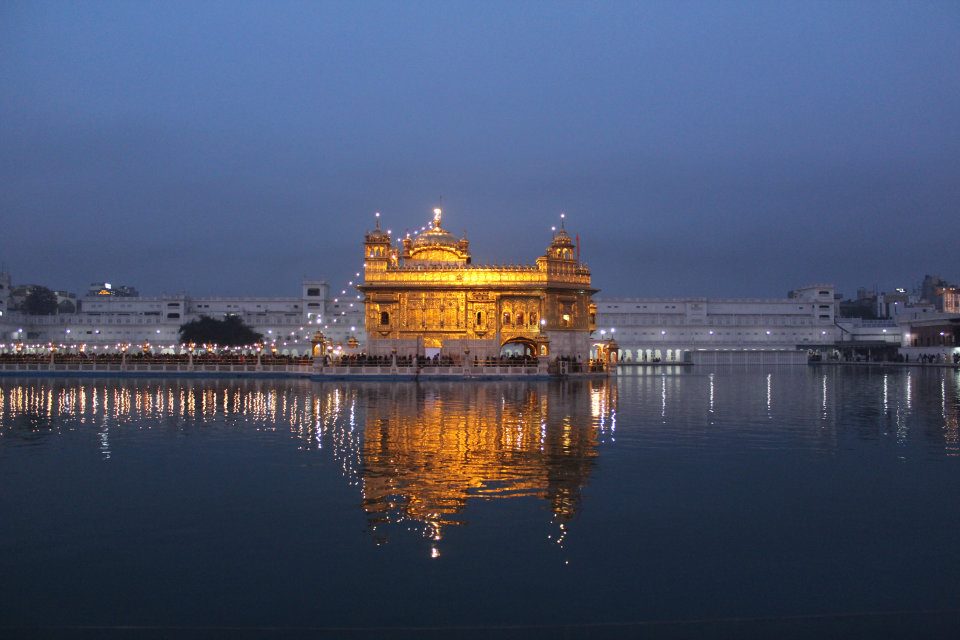
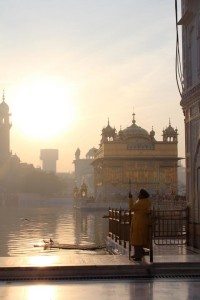
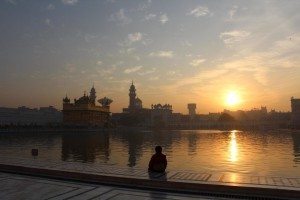
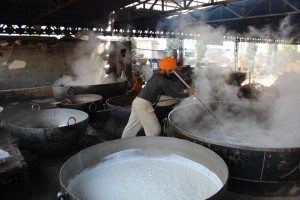
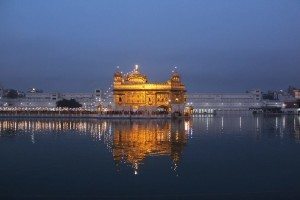



Reading this article gave us the chance to relive our experience of our visit to Amritsar and the Golden Temple last November. It is truly a highlight of a visit to India. Well worth the journey. It is a very humbling experience- unforgettable.
Thanks for reading!
I felt pretty down when I realized we wouldn’t be able to make it to Amritsar for this visit to India – but I guess it just means I have something spectacular to look forward to the next time around!
Absolutely!! You will just have to make another trip! I lived in India for 18 months, and I still didn’t see everything – so don’t feel too bad!!